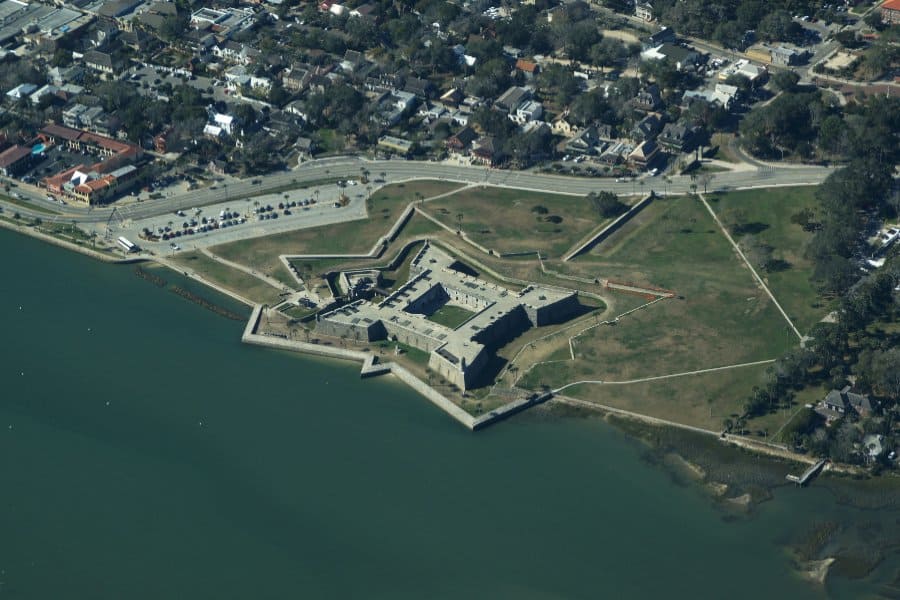The quest to identify the oldest city in the United States takes us on a fascinating journey through time, tracing the footprints of early settlers, explorers, and indigenous cultures that have shaped the nation’s history. At the heart of this exploration lies St. Augustine, Florida, established in 1565 by Spanish explorers, earning the distinguished title of the oldest continuously inhabited European-established settlement in the continental U.S. This city, rich in history and cultural heritage, offers a unique window into the past, revealing stories of conquest, survival, and the complex tapestry of American identity. By examining St. Augustine’s storied streets and historic landmarks, we uncover the roots of the nation’s oldest city and gain insights into the broader narrative of America’s development and the enduring legacy of its earliest communities.
What’s the oldest city in the US?
The oldest city in the United States is St. Augustine, Florida. Founded in 1565 by Spanish explorer Pedro Menéndez de Avilés, St. Augustine holds the title of the oldest continuously inhabited European-established settlement within the continental U.S. This historic city was established to secure Spanish claims to the New World and to thwart French ambitions in the region. Over the centuries, St. Augustine has witnessed significant historical events and has preserved many of its historical sites, offering a vivid glimpse into America’s early colonial period. Its rich history, combined with its well-preserved architectural heritage, makes St. Augustine a critical historical landmark and a fascinating destination for anyone interested in the early history of the United States.
The Oldest City In The US: St. Augustine, Florida
St. Augustine, Florida, stands as a monument to early American history, claiming the title of the oldest continuously inhabited European-established settlement within the continental United States. This distinction is rooted in its founding in 1565, when Spanish explorer Pedro Menéndez de Avilés set foot on Florida’s coast, establishing a settlement that would endure through centuries of change, conflict, and development. The significance of St. Augustine extends beyond its age; it serves as a living museum, encapsulating pivotal moments and architectural marvels from its lengthy past:
Foundation and Early History: St. Augustine was established over four decades before the English colony at Jamestown, Virginia, making it the first permanent European settlement in North America. Its founding was driven by the Spanish crown’s desire to claim and secure its territories in the New World, particularly to counter French Huguenot presence in the region.
Strategic Military Site: The city’s strategic location on the northeast coast of Florida made it a key military outpost for the Spanish Empire. The Castillo de San Marcos, a massive stone fortress that still stands today, symbolizes St. Augustine’s military significance. Constructed between 1672 and 1695, it is the oldest masonry fort in the continental U.S., designed to protect the city from pirate raids and invasions.
Cultural Melting Pot: Throughout its history, St. Augustine has been a melting pot of cultures, including Spanish, British, and Native American influences. This blend is evident in the city’s diverse architecture, cuisine, and cultural practices, which keep visitors and scholars interested in its rich heritage.
Preservation and Heritage: St. Augustine’s extensive historical landscape includes numerous preserved buildings, monuments, and sites dating back centuries. Efforts to maintain and restore these landmarks have been pivotal in keeping the city’s history alive. The city’s dedication to preservation allows visitors to step back in time, exploring narrow streets, ancient buildings, and historical sites that tell the story of America’s earliest days.
Educational and Touristic Center: Today, St. Augustine is a beacon of history and an educational and tourist center. Museums, historical tours, and annual events offer immersive experiences, providing insights into the colonial, indigenous, and African American histories that have shaped the region.
Early Life and Settlement in St. Augustine
The early life and settlement in St. Augustine, Florida, provide a fascinating glimpse into the challenges and triumphs of the first European settlers in what would become the United States. Founded in 1565 by Spanish explorer Pedro Menéndez de Avilés, St. Augustine’s establishment marked the beginning of continuous European presence in North America, predating the English settlements of Jamestown and Plymouth. The city’s early years were characterized by hardship, strategic importance, and a rich cultural tapestry that has left a lasting legacy on the region.
Upon its founding, St. Augustine was primarily a military outpost established to protect Spanish claims in the New World and to serve as a base for further exploration and missionary work. The settlers faced immediate challenges, from hostile encounters with indigenous populations to the harsh realities of colonization, including disease, hunger, and environmental hardships.
St. Augustine’s location on the Florida coast made it a strategically vital port for the Spanish, as a guardian of the sea lanes to the Caribbean and the treasures being shipped back to Spain. This importance necessitated the construction of formidable defenses, notably the Castillo de San Marcos, built to withstand attacks by pirates and other European powers.
The settlement became a focal point for cultural exchange and conflict between the Spanish settlers, indigenous peoples, and other European colonizers. St. Augustine’s history is marked by periods of cooperation and conflict with the native Timucua and other tribes and British forces, particularly during the later colonial period.
Early St. Augustine’s economy was based on military provisions, agriculture, and trade. The settlers cultivated crops and engaged in fishing and trading with the indigenous populations and other European settlements. Despite its hardships, St. Augustine developed a diverse community with a social structure that included soldiers, settlers, religious missionaries, and enslaved Africans.
Religion played a significant role in the early life of St. Augustine, with the establishment of missions to convert the indigenous population to Christianity. The presence of Franciscan friars and the construction of churches underscored the Spanish crown’s desire to spread Catholicism in the New World.
The architectural landscape of early St. Augustine reflected its Spanish colonial origins, with the construction of simple wooden structures evolving into more permanent masonry buildings. The city’s layout and fortifications were designed to protect against attacks, while religious and administrative buildings demonstrated the settlement’s cultural and political priorities.
The City’s Influence On American History And Culture.
St. Augustine’s influence on American history and culture is profound and multifaceted, reflecting over four centuries of continuous settlement, conflict, and cultural exchange. As the oldest European-established city in the United States, its legacy offers invaluable insights into the early colonial period, the interactions between European settlers and indigenous populations, and the evolution of American society and governance. The city’s impact can be seen in several key areas:
Colonial and Military History:
St. Augustine’s strategic location made it a pivotal military outpost throughout its history, influencing colonial and military strategies among European powers vying for control in the New World. The Castillo de San Marcos, the oldest masonry fort in the continental U.S., symbolizes the city’s military significance and role in defending Spanish claims in North America against British and pirate threats. These military engagements, and the fort’s resilience, have left a lasting imprint on U.S. military heritage.
Cultural Exchange and Diversity:
The city served as a melting pot of cultures, including Spanish, Native American, African, and later British influences. This cultural confluence has contributed to a rich tapestry of customs, traditions, and architectural styles unique to St. Augustine, reflecting broader themes of cultural exchange and adaptation central to American history.
Preservation and Historical Legacy:
St. Augustine has played a crucial role in the preservation movement in the United States. Efforts to conserve its historic sites, buildings, and artifacts have underscored the importance of preserving national heritage and have served as a model for historic preservation efforts across the country. The city’s dedication to maintaining its historical integrity allows for ongoing research and education on America’s colonial past.
Tourism and Education:
As a living museum of American history, St. Augustine attracts millions of visitors and scholars interested in its storied past. Its well-preserved colonial district, historical reenactments, and educational programs offer a window into the daily lives of its early inhabitants, the complexities of colonial governance, and the enduring struggle for control and identity in the New World.
Religious Influence:
St. Augustine’s establishment and growth were deeply intertwined with missionary efforts to convert indigenous populations to Christianity. The city’s religious institutions, including the Cathedral Basilica of St. Augustine, highlight the role of religion in shaping community identity, governance, and cultural practices in the early American colonies.
Architectural Influence:
The city’s architecture provides a tangible link to its past, with Spanish colonial, British, and early American structures offering insights into its inhabitants’ evolving design preferences, living conditions, and defensive needs over the centuries. This architectural heritage enriches the American cultural landscape, offering early colonial urban planning and fortification examples.
Civil Rights Movement:
In the 20th century, St. Augustine also played a significant role in the Civil Rights Movement. The city was a site of protests and demonstrations in the 1960s, highlighting its ongoing relevance to national civil rights and social justice discussions.
Conclusion
St. Augustine, Florida, stands as a monumental testament to the enduring spirit of American history and culture. As the oldest continuously inhabited European-established settlement in the continental United States, its foundations in 1565 mark the beginning of a rich and complex narrative that has significantly influenced the nation’s development. From its early days as a strategic military outpost to its role in the Civil Rights Movement of the 20th century, St. Augustine encapsulates the multifaceted layers of American history, embodying themes of resilience, cultural diversity, and adaptation. The city’s architectural marvels, historical landmarks, and preserved artifacts offer a tangible connection to the past, bridging the early explorers’ ambitions and the contemporary efforts to understand and preserve this legacy. St. Augustine’s story is not just about the survival of a single city. Still, it reflects broader themes relevant to the American experience, including the clash and melding of cultures, the struggles for control, freedom, and rights, and the ongoing efforts to preserve historical integrity while navigating modern challenges.










